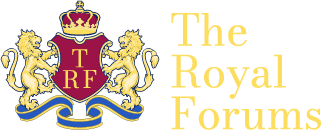And another upcoming event.
QMII will take part in the D-Day commemorations in Normandy this year.
It is actually the first time, because this year, 70 years on, DK has been acknowledged as one of the Allied nations. Predominantly due to the effort of Danish sailors during D-Day and otherwise during the war.
There have been cosiderable doubt as to whether DK during WWI was an ally or a vassal state of Nazi-Germany, or just as country trying to survive.
If I am to be brutally honest, the doubt is very much justified, at least until the summer of 1943, where the Parliament resigned and the policy of co-operation with Germany ended. The attempted deportation of the jews was also the final straw for the population as a whole.
So you can say that from 1943 DK became a member of the Allied club, but not before, not in my eyes.
We have been through it before here on TRF, so very briefly:
The DK policy was to lie low and hope the war would bypass us as it did, during WWI. It almost succeeded. DK was occupied almost as an afterthought and at the express order of Hitler.
It was cynically decided that a token resistance should be put up, before surrendering. It was impossible to resist the might of the German military machine anyway. That policy cost the lives of sixteen Danish soldiers and a couple of costums officers and a number of German soldiers.
With that it was shown, foreign politically speaking, that DK was protesting the occupation.
During the first years of the war, the Parliament actively promoted co-operation with Nazi-germany, actively promoted Danes to join the fight on the Eastern Front in Waffen SS.
DK also joined the anti-comintern Pact aimed at the Soviet Union.
In return DK enjoyed autonomy - and profited quite well on the occupation, thank you very much! Export to Germany boomed, not least agricultural products and quite a number volunteered to work in Germany and were paid very well - some were forced though, including a great uncle of mine, who came home with a nervous breakdown due to the allied bombings. But that happened later on in the war.
The resistance became active, very active indeed. But that was predominantly after 1943, until then must Danes, more less grudgingly, lived a live and let live existance with the German occupiers.
Was it cynical? You bet!
Was it wise? Well, if you look at the result. I.e. minimizing suffering and carnage in DK, then the answer must be yes.
Was it honorable? Absolutely not!
As a Dane, now in 2014, looking back my left half of my brain can understand the mindset and the reasoning. The more emotional right half of my brain is deeply ashamed.
The only and perhaps best consolation, is that practically all other occupied countries have a similar ambivalent story. But few have been willing to talk too much about it.
The fact is that it would have been impossible for Germany and partly Italy to occupy most of Europe and at the same time fight on two fronts without a very active co-operation by many in the occupied countries. In some cases a very willing co-operation! Waffen SS had little problems finding volunteers willing to fight the Communists even among Britons. Britischer Freikorps was very small and insignificant but it might be an indication of what would have happened had the Germans managed to cross the Channel.
And in other countries partisan movements were more busy fighting each other than fighting the occupiers. In countries like Jugoslavia, Greece and Northern Italy it was more akin to civil war than resistance.
It wasn't black and white. That came later on. Partly helped by a kind of collective amnesia.
Anyway, so this year it has been decided that DK - "well, okay, you were an ally too".


 Thanks, Iceflower.
Thanks, Iceflower. 


